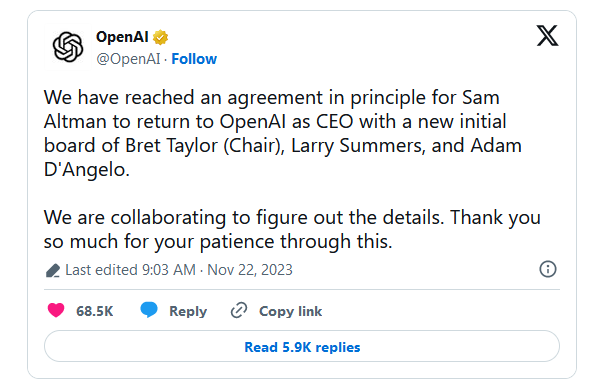AI tokens’ weekly trading volume surpasses $2 billion for the first time since March
The surge in the indicator is mainly due to the Worldcoin and Render projects

23.11.2023 - 13:40
564
4 min
0
What’s new? The weekly volume of trades in tokens of blockchain projects using artificial intelligence technologies exceeded $2 billion for the first time since March of this year. As the experts of the analytical company Kaiko write, the increase in the indicator is provided mainly due to the trading of coins Worldcoin (WLD) and Render (RNDR).
What else is known? Render (RNDR) is a distributed GPU network based on the Ethereum blockchain for creating animation, motion graphics, and VFX rendering with copyright protection. Content creators rent GPU from node operators in exchange for RNDR utility tokens. The asset, created under the ERC20 standard, as of November 23, 12:50 UTC is 51st place in the ranking of cryptocurrencies with a capitalization of $1,23 billion and is trading at $3,3, a day lost 0,5%. The weekly growth at the same time amounted to 9%.
On November 3, the project’s team announced that it would distribute 1,14 million RNDR tokens to new node operators. On November 9, the Binance crypto exchange opened trading RNDR paired with the FDUSD stablecoin. In March, the exchange canceled commissions for trading FDUSD paired with bitcoin. In addition, Binance’s Japanese arm will also list RNDR on November 27.
Worldcoin is a digital financial system that requires biometric verification and a World ID digital passport. After that, the user gets access to the World App wallet with zero fees and 25 free native tokens WLD. The asset ranks 153rd on the list of cryptocurrencies by market capitalization with a market cap of $280,1 million and is trading at $2,39, having lost 5,3% per day and 0,7% per week.
Sam Altman of OpenAI, the company that created the most popular AI chatbot, ChatGPT, is behind the project’s development. On November 17, Altman stepped down as CEO, after which OpenAI’s staff almost entirely demanded board members resign, threatening to move to rival Microsoft. In turn, OpenAI investors sued the board of directors.
As a result, on November 22, OpenAI reported that Altman would return to the post of CEO, and the composition of the board of directors would be completely changed.
Later, Reuters journalists reported on the reasons for the conflict between Altman and the board of directors. Thus, on the eve of Altman’s dismissal, several OpenAI employees sent them a letter saying that the company had created a potentially dangerous AI. The work on the project of “a powerful artificial intelligence” under the working name “Q*” was later confirmed by the company, but the details of the letter were not disclosed to the media.
Useful material?
Trends
As of January 21, the capitalization of this sector of the crypto market exceeds $519 billion
Jan 21, 2025
Market
The platform generated $9,5 million in revenue during the same time
Jan 20, 2025
Market
Shares of the Trust are designed to track the market price of XRP with fewer fees and expenses
Jan 17, 2025
Market
The asset will allow USDT to move seamlessly between different blockchains
Jan 17, 2025
Market
Earlier, the community criticized the project for its lack of transparency, which led to a sharp drop in the HYPE token price
Jan 8, 2025
Market
Rising US Treasury bond yields are negatively affecting risk assets
Jan 8, 2025











 Telegram
Telegram  Twitter
Twitter